How Do They Do That? The Ressence Type 3
by Ian Skellern
A few years ago at Baselworld, Ressence founder Benoît Mintiens showed me a prototype of a new watch he was working on.
Mintiens explained that, while looking at a bottle of water on his table, the back of the label, which was on the opposite side of the bottle to him, looked as though it was on his side of the bottle. Curious, he discovered that this effect is caused by the eye being fooled because it is used to seeing light passing through glass/air rather than glass/water.
And he wondered if the same optical illusion effect might work for a watch.
As Mintiens passed me the watch, I noticed that the dial looked superficially similar to Ressence’s first watch, but this proposed new model was obviously a little larger and had a more rounded case and crystal.
As I held it a bit closer, Mintiens explained that the concept was to fill the dial space entirely with fluid so as to minimize refraction. This should have the effect of making the indications appear as though they are on the surface of the sapphire crystal rather than below on the dial.
While I was examining the watch, Mintiens stressed to me not to judge too critically as this was just a first prototype. I laughed and replied, that there is no need to remind me that it’s a prototype as it is obvious that he has just glued a photo of the dial onto the crystal to simulate the effect he wanted to demonstrate.
My jaw dropped when he replied, no, this is actually a dial bathed in fluid and that is the optical effect I was seeing.
Unlike air, the fluid above the dial (and flooding the mechanisms in the indication module) has a very similar refractive index as the glass. The eye is used to seeing light bend as it is passes from the dial of a watch to the eye and our brains automatically use that information to gauge the distance between dial and glass.
Seeing is not believing
When the eye sees no bending of light, the brain decides that is because there is no space between crystal and dial and we see what our brain expects us to see, rather than what is actually in front of our eyes.

Though it looks like more, only two movements are in the liquid: the top is a reflection (not refraction) of the two below. The dial modules rest in fluid for days to ensure that there are no trapped air bubbles. The sealing plate sandwiched between the top fluid-filled module (housing the dial) and dry bottom section (housing the movement) is attached under the fluid to avoid air entering
Surprise me once, surprise me twice
The Ressence Type 3 is really in a class by itself and I knew, or thought that I knew, just how different it was to other mechanical timepieces. But on a recent visit to an atelier in Switzerland where the Type 3 is assembled, I was profoundly surprised (yet again) at just how dissimilar many of the components in the Type 3 were to those found more “normal” mechanical watch movements.

Not the kind of component you usually see in a watch movement, but the Ressence Type 3 requires quite a few of them
Look, Ma, no hands!
With his first watch, the Series One, Mintiens replaced physical hands with graphical representations of them in the form of lines printed on rotating disks set flush with the dial. And because graphical information is usually two-dimensional to be easier to understand, Mintiens set all of the disks at the same level, with no overlaps.
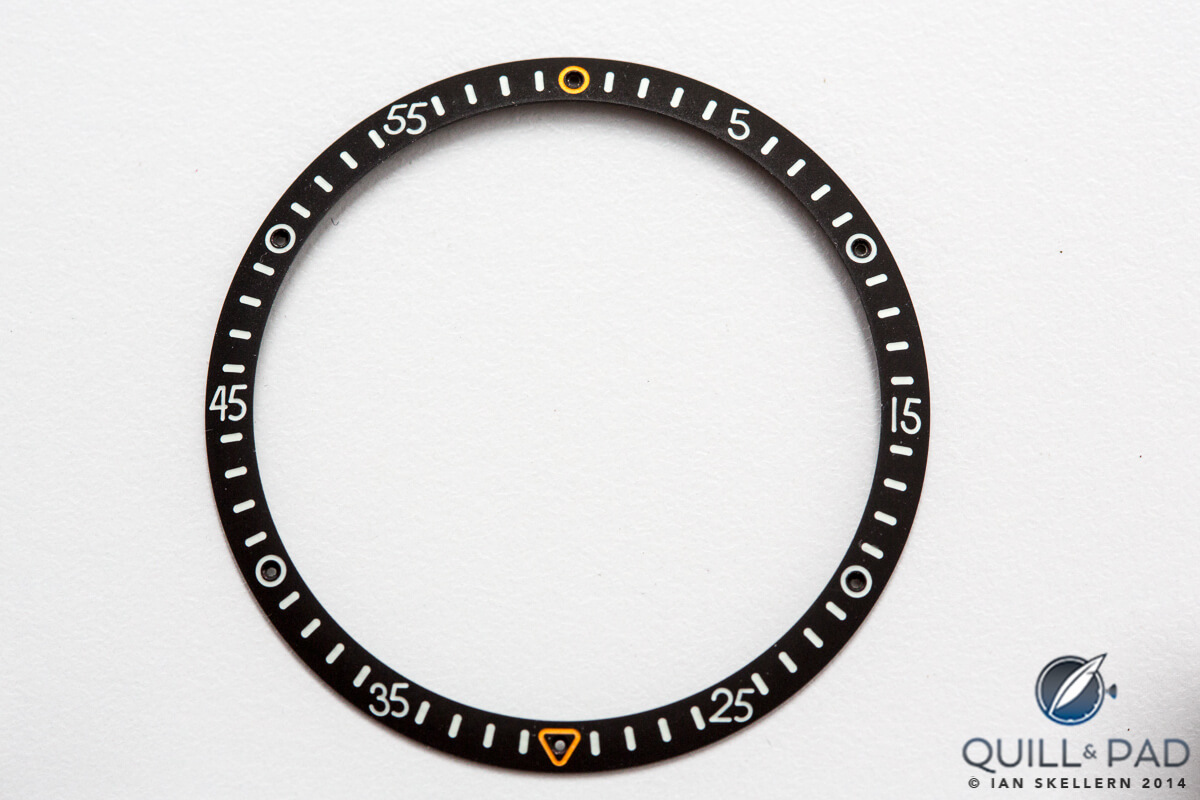
The minute chapter ring, which encircles the dial of the Ressence type 3; the small orange arrow at the bottom points to the date
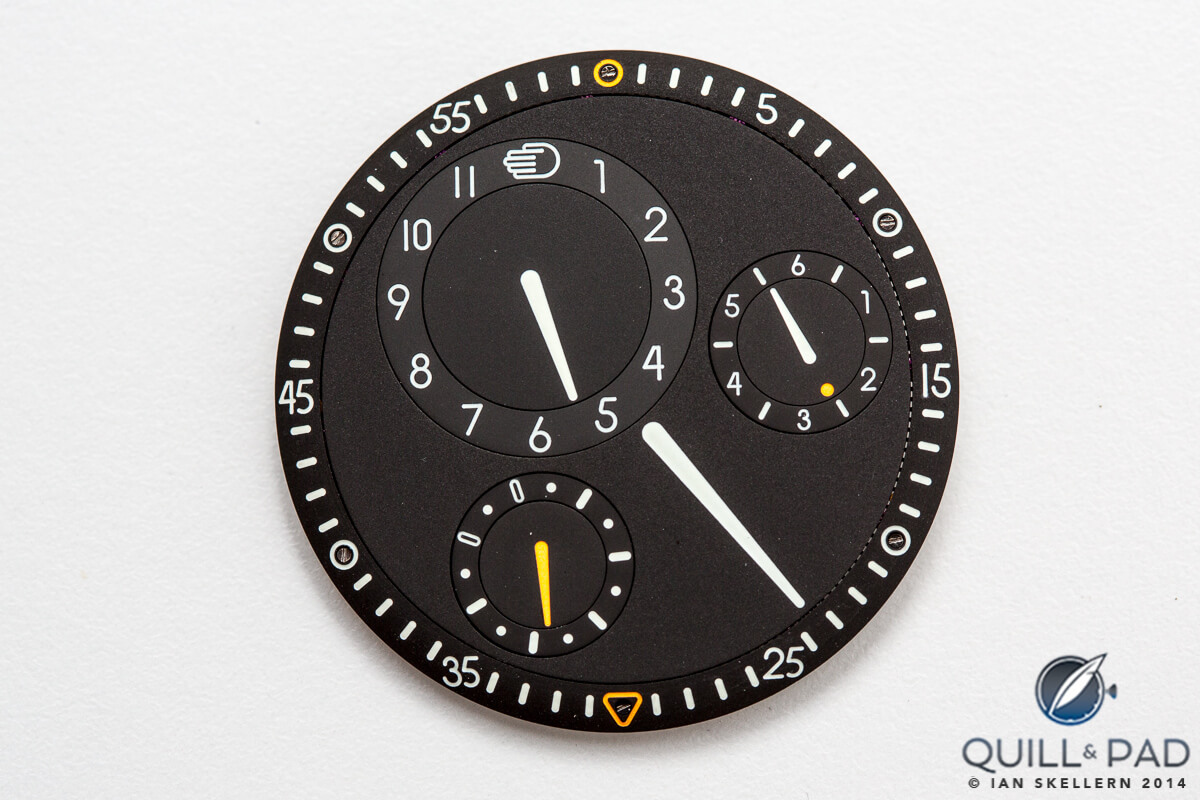
The dial of the Ressence Type 3: while it looks flat from this angle, the dial is actually curved to a slight dome shape
The optical effect of indications apparently displaying on the surface of the crystal of the Type 3 is only possible because Ressence watches have no hands, so the crystal can be much closer to the dial than normal watches. It was only due to the two-dimensionality of the dial on the Series One that Mintiens was able to − optically at least − eliminate the vertical distance altogether on the Type 3.
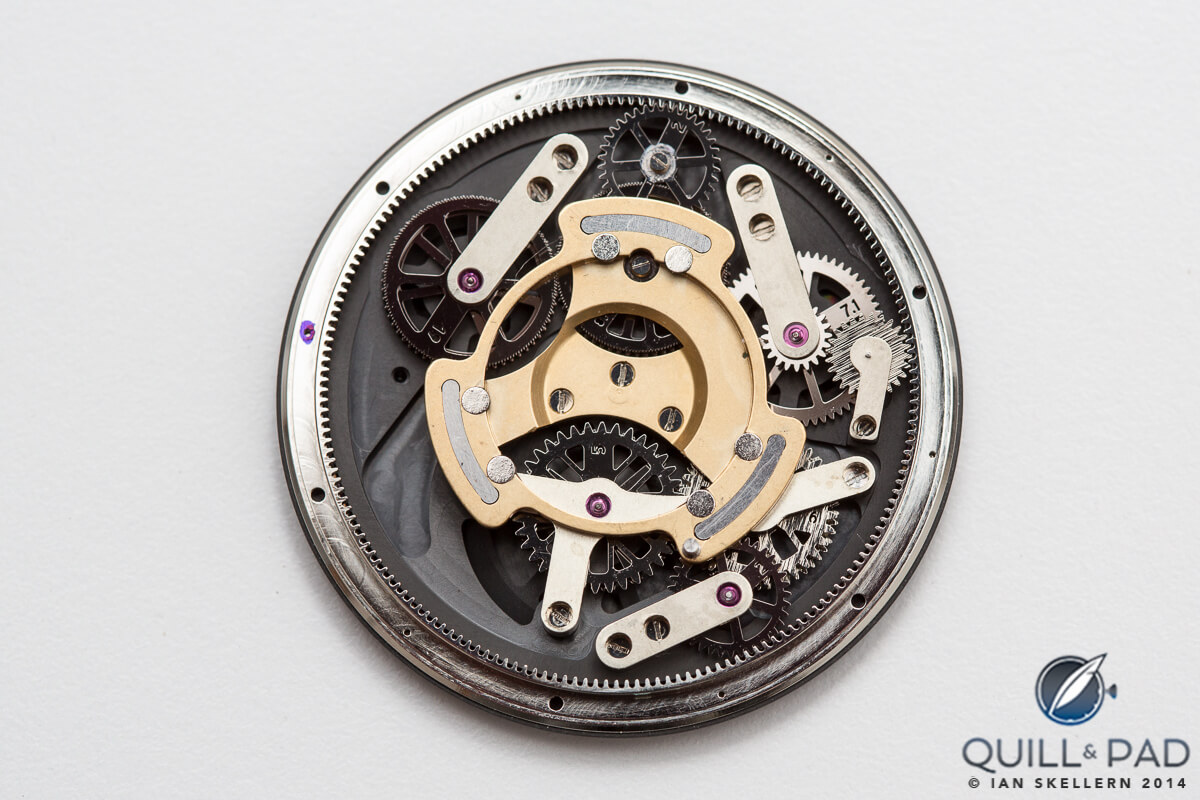
The complex system of eventually fluid-filled gearing under the dial of the Ressence Type 3; these gears are driven by magnets so as to minimize perforations in the fluid-tight upper section. Please note that the movement has “working” screws, fitted, not the final screws
Since the whole dial, which indicates minutes as it rotates, is one of those disks, and the others − indicating hours, seconds and am/pm − are set into the rotating minute dial, you can appreciate that dial-side simplicity for the viewer comes at the cost of considerable complexity underneath the dial.
This video illustrates how time is indicated on a Ressence Series 1 dial like emotions on a person’s face.
“I eventually would like to be able display time on a surface like a smile on a face. With its indications appearing as if they are on the surface of the crystal, the Type 3 is a significant step in this direction,” said Mintiens.
While the Type 3 has a relatively large number of indications on its dial – i.e., hours, minutes, seconds, day and date – only two connections are needed between movement and display module: one for the time, the other for the date.
To eliminate any physical transmission between the dry movement and wet display, two pairs of tiny, focused magnets convey the information through the titanium center section of the case, which not only forms a barrier between movement and indications, but also forms the lugs for the strap.
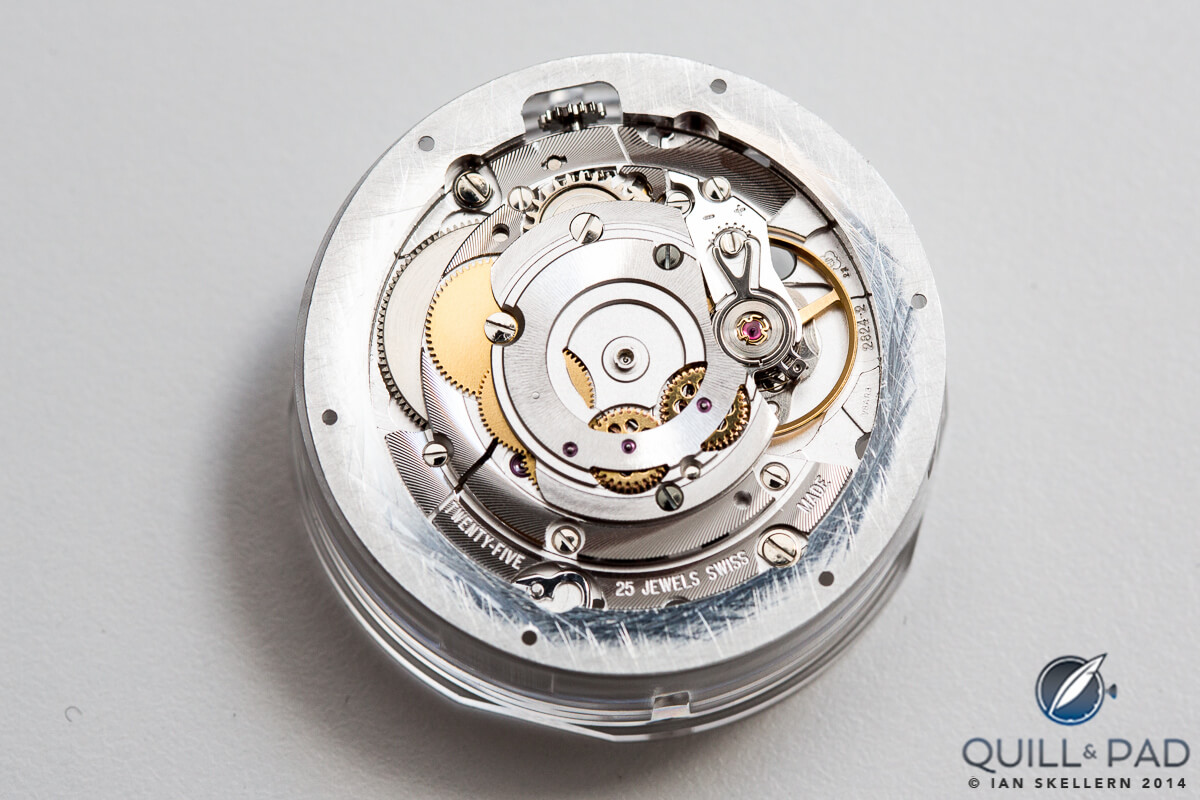
The back of the Ressence Type 3 movement without the automatic winding rotor. Please note that the movement has “working” screws, fitted, not the final screws
Look, Ma, no crown!
Not content with revolutionizing the display of time, Mintiens has also reinvented winding a watch. Ressence timepieces have no crown and to date have boasted automatic winding with (relatively) complicated hand winding/time setting systems.
Mintiens has now simplified the Ressence winding system to the maximum: rotating the back in one direction winds and sets the time forward, rotating in the opposite direction sets the time back. That’s it. As the movement winds automatically, only a short wind is enough to set it in motion.
Imagine a normal two-position crown: it winds in position one, pull it out to position two and set the time. But then combine both operations so they are accomplished in one position.
And then eliminate the crown!

Ressence Type 3’s back: winding and setting are as simple as rotating the case back in one direction or the other
For more information, please visit www.ressence.eu.
Quick Facts
Case: 44 mm sapphire crystal case top and bottom with titanium separator/lugs
Dial: fluid-filled so that the indications appear on the surface of the crystal
Movement: automatic winding, no crown
Functions: hours, minutes, seconds; date, day
Price: € 33,500 (including VAT)
Trackbacks & Pingbacks
-
[…] that I knew Ressence and understood the refraction-free fluid-filled dial concept pretty well (see How Do They Do That? The Ressence Type 3). And what I knew had little to no claim on being any kind of sports watch, let alone Best Sports […]
-
[…] regulators: 1. Ressence Type 3 (See How Do They Do That? The Ressence Type 3.) 2. Moritz Grossmann Benu Tourbillon 3. Chronoswiss Sirius Régulateur 4. Urban Jürgensen & […]
Leave a Reply
Want to join the discussion?Feel free to contribute!

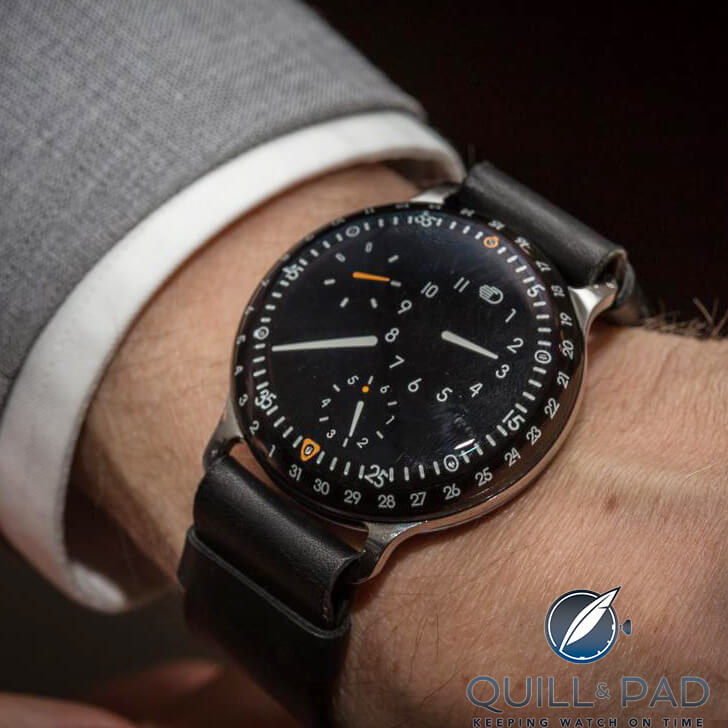
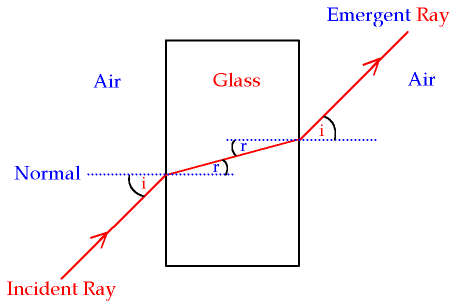
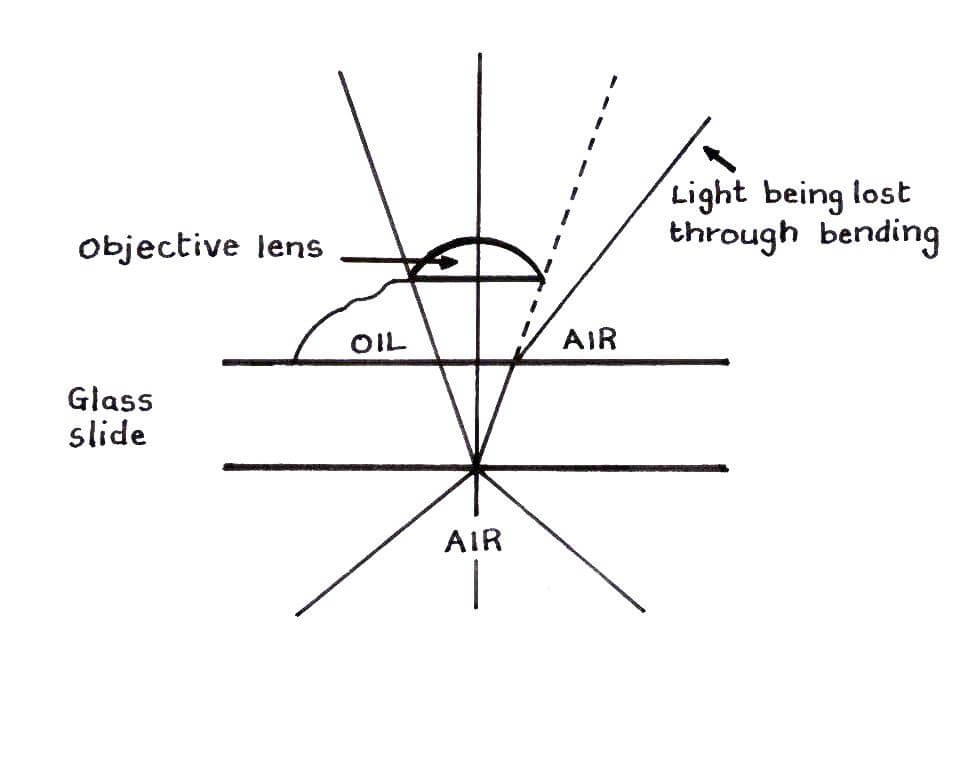
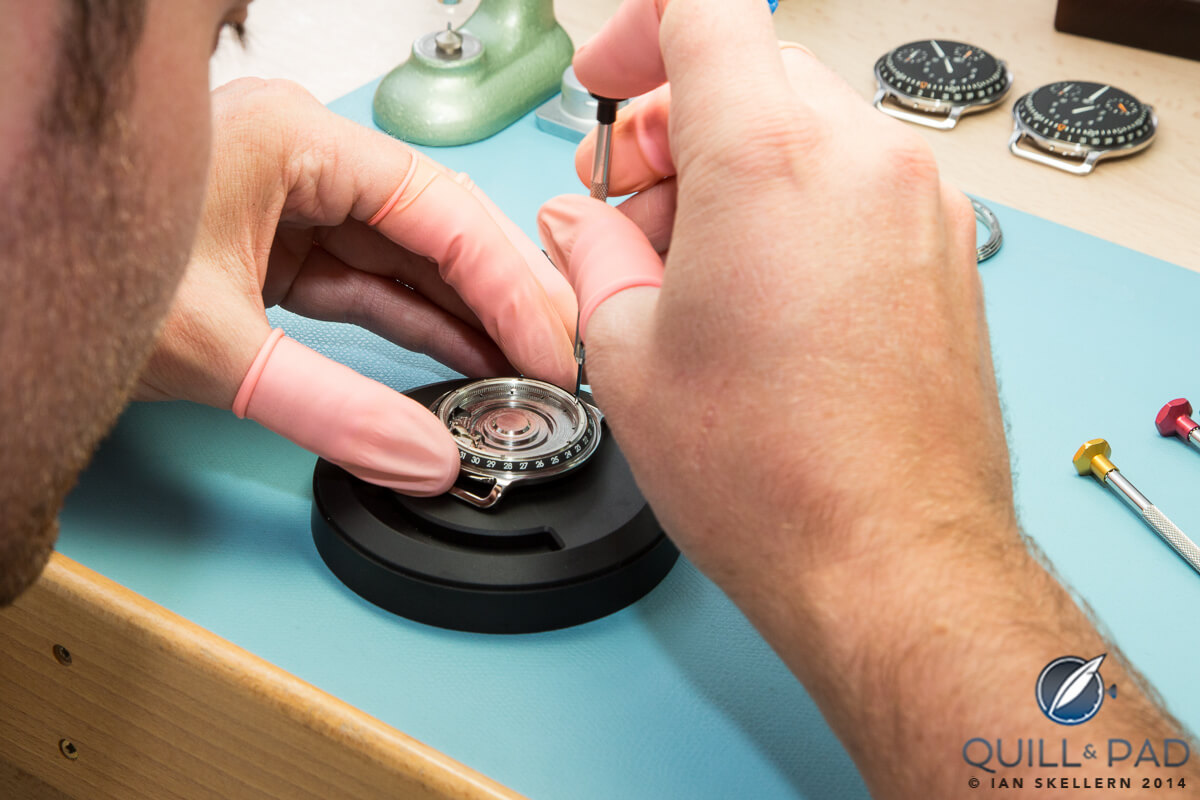
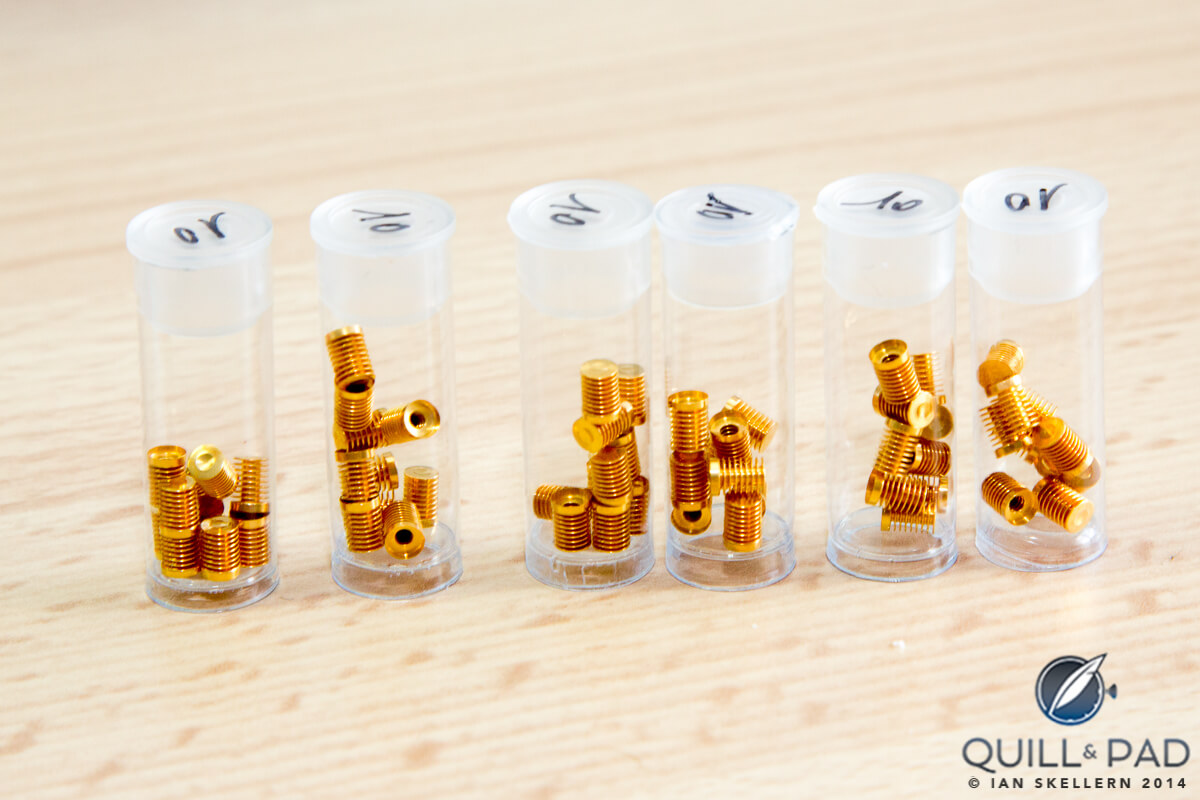
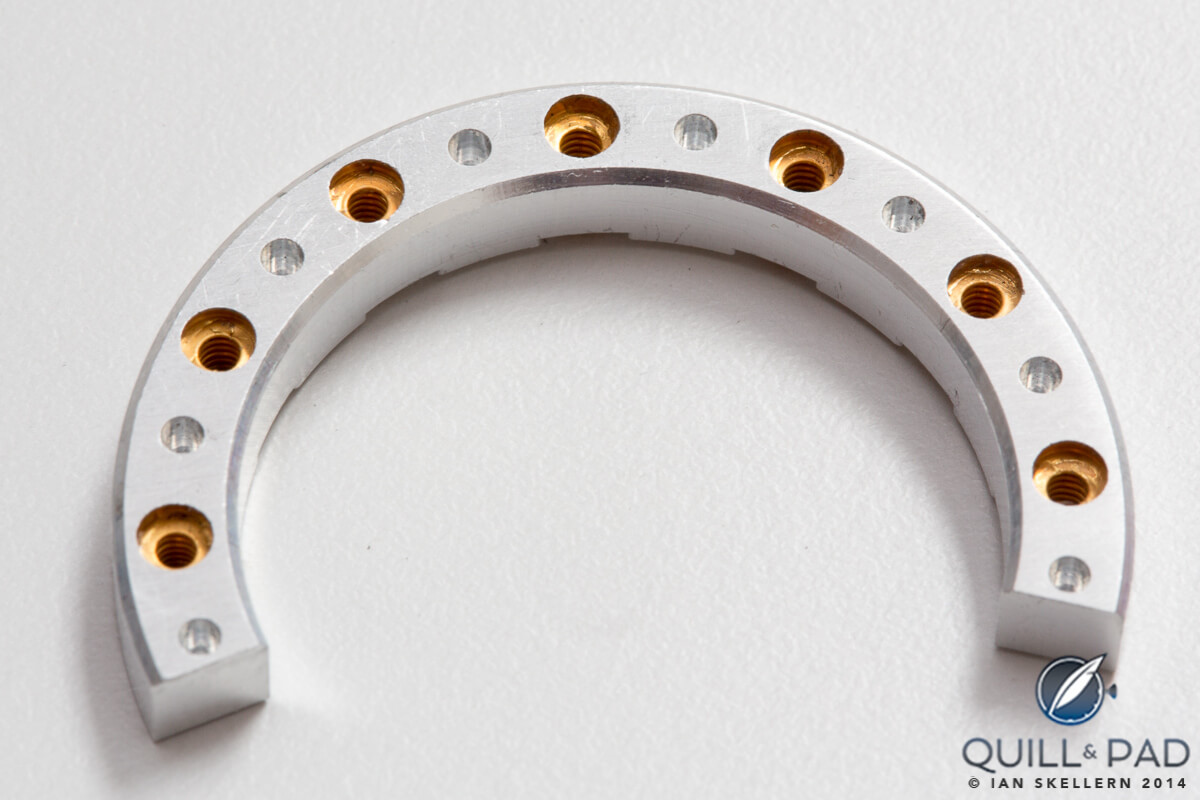
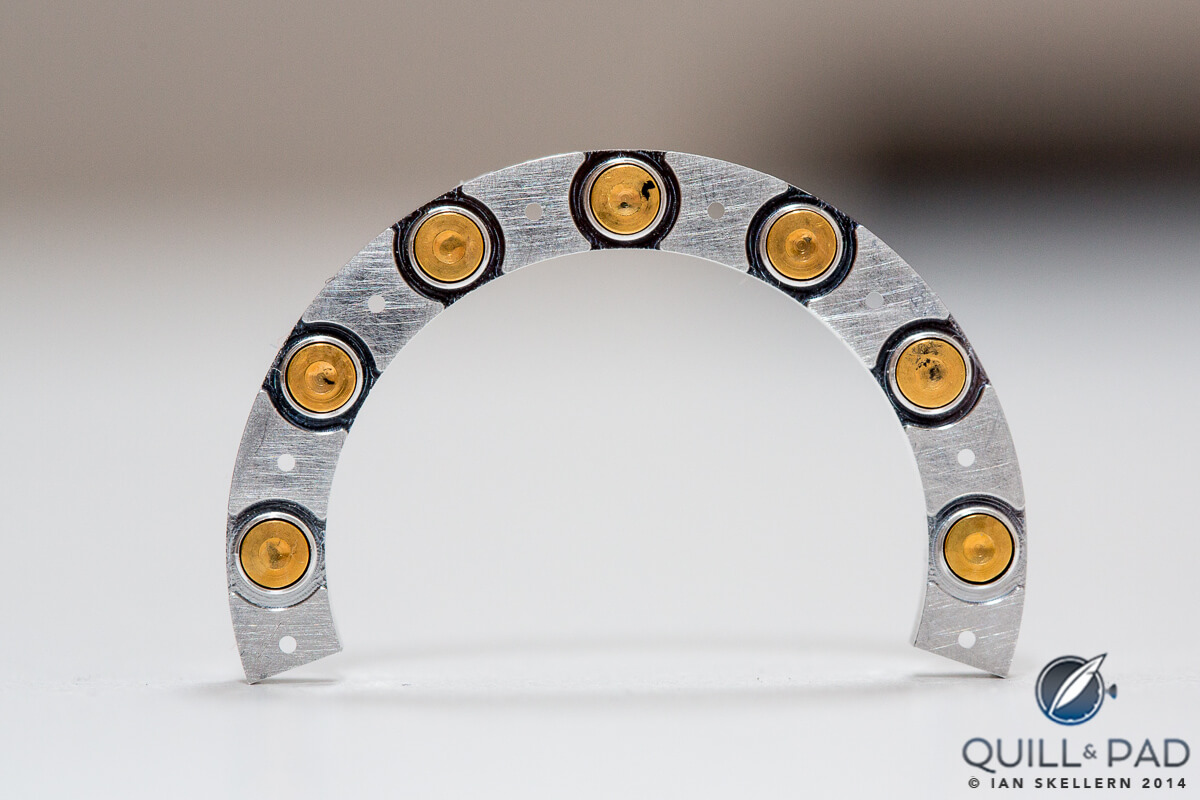
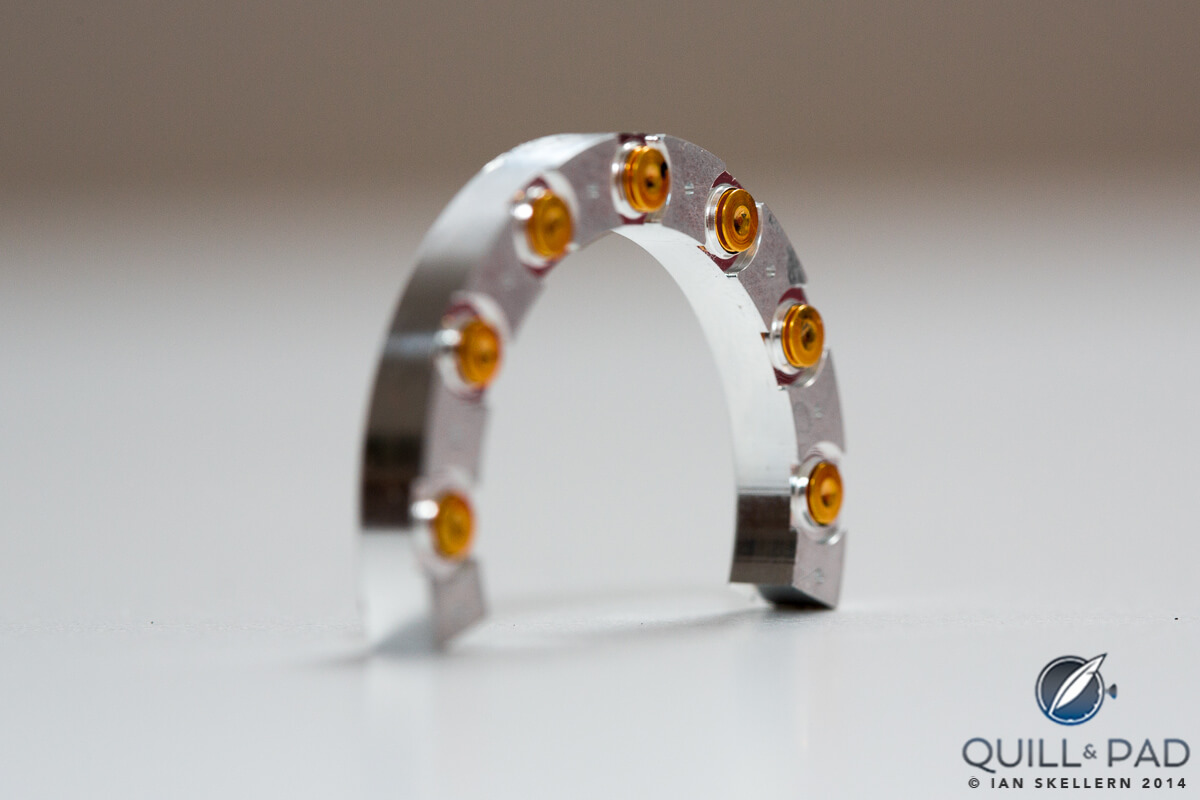
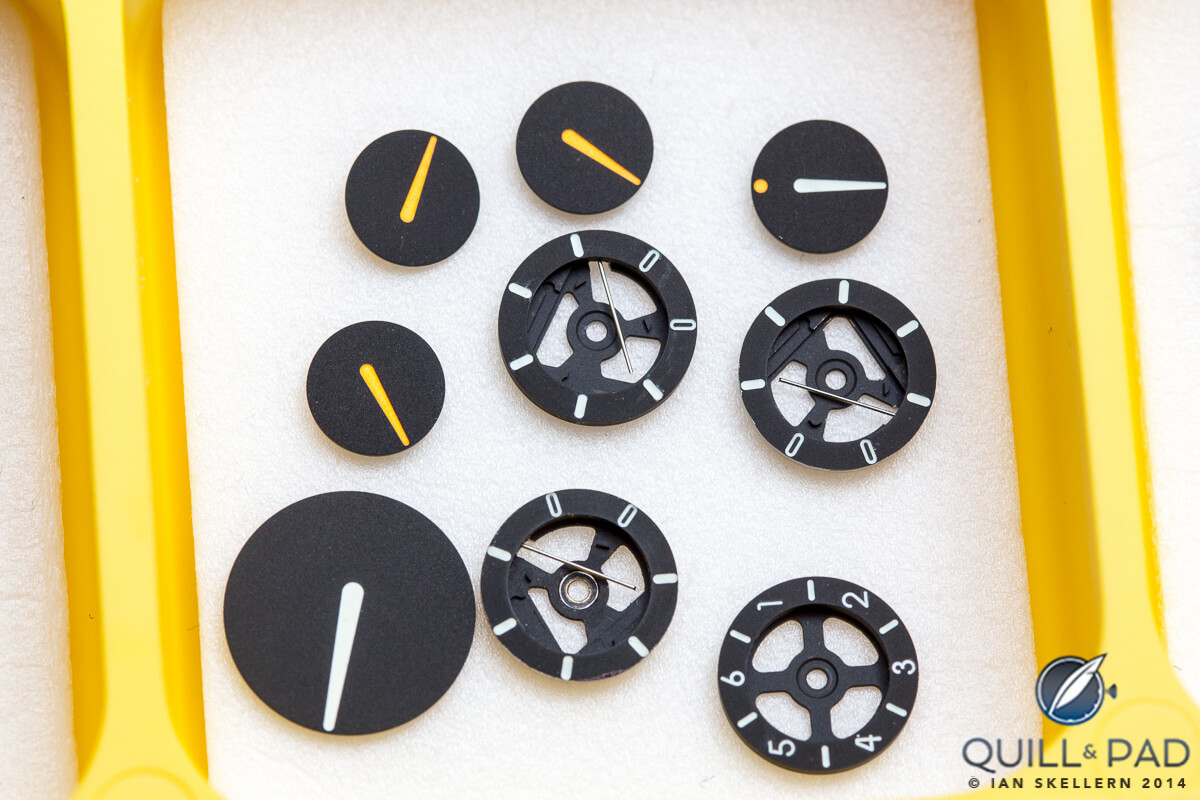
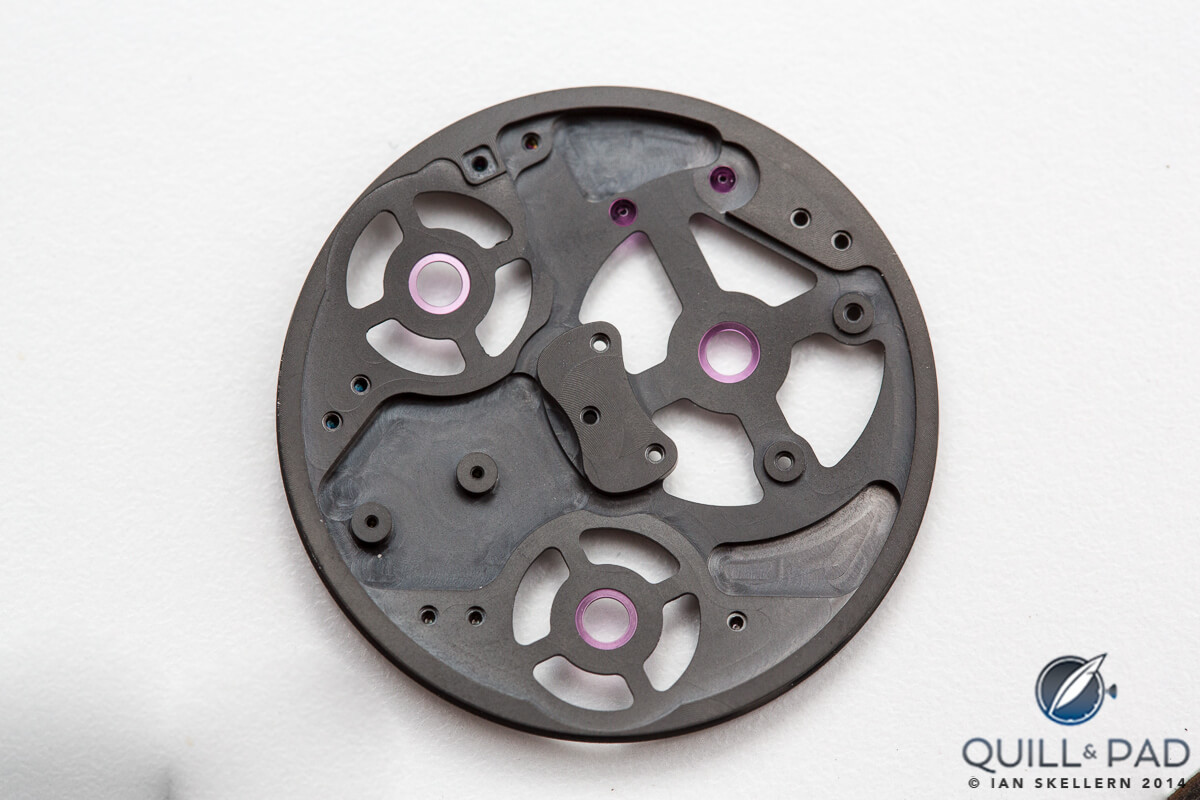
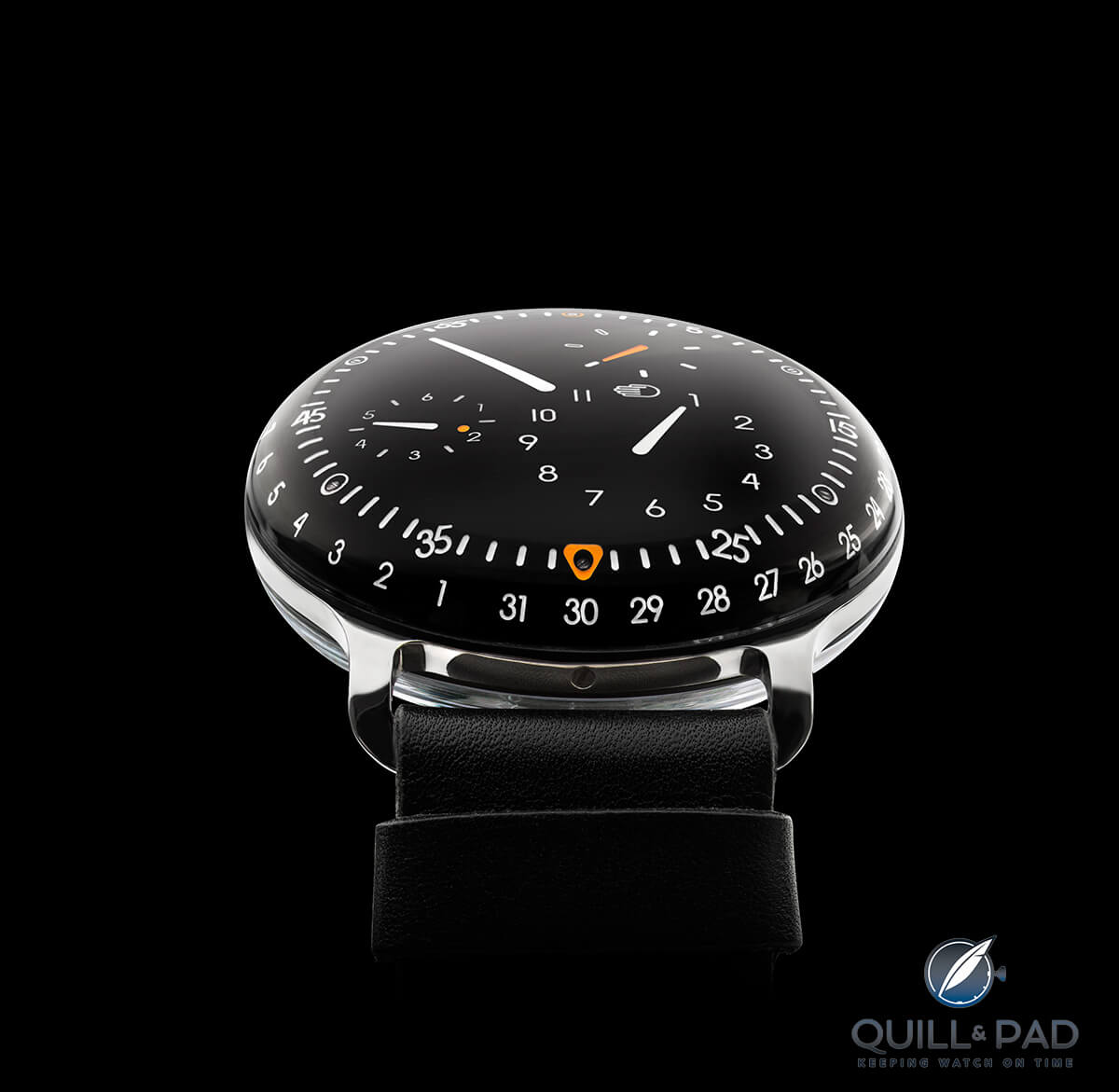
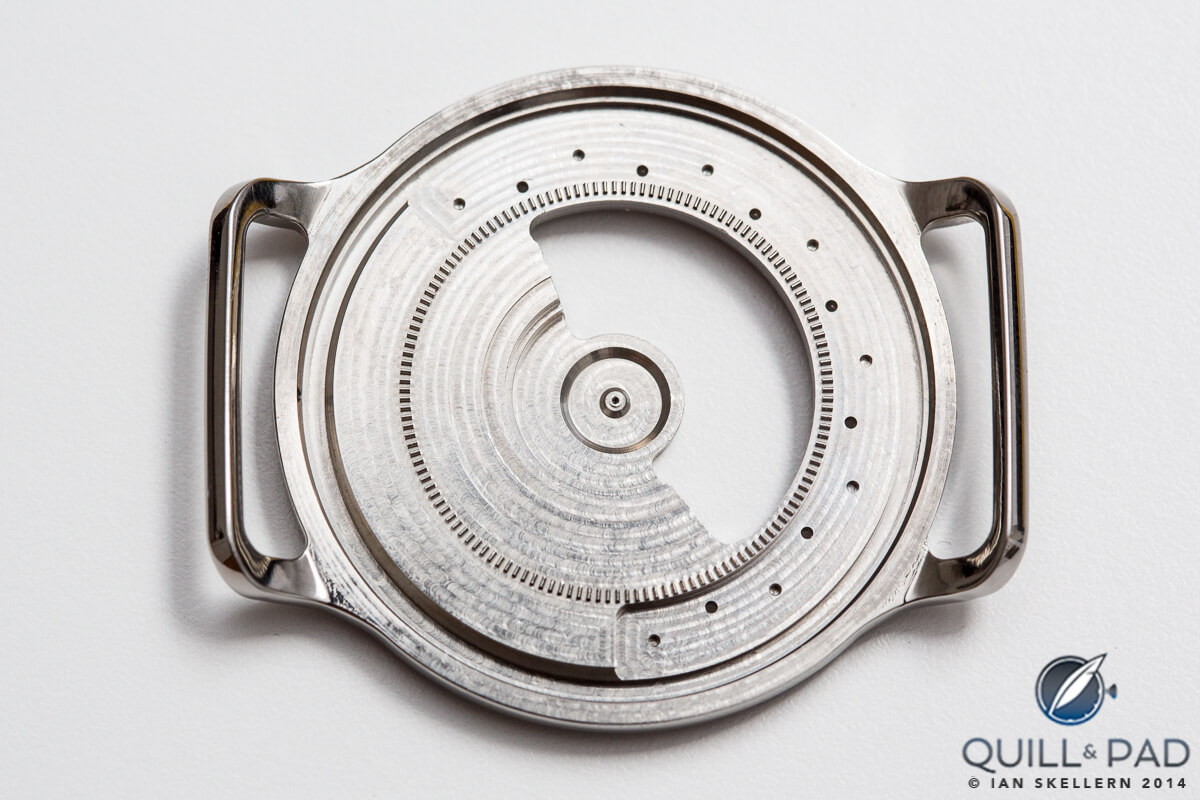
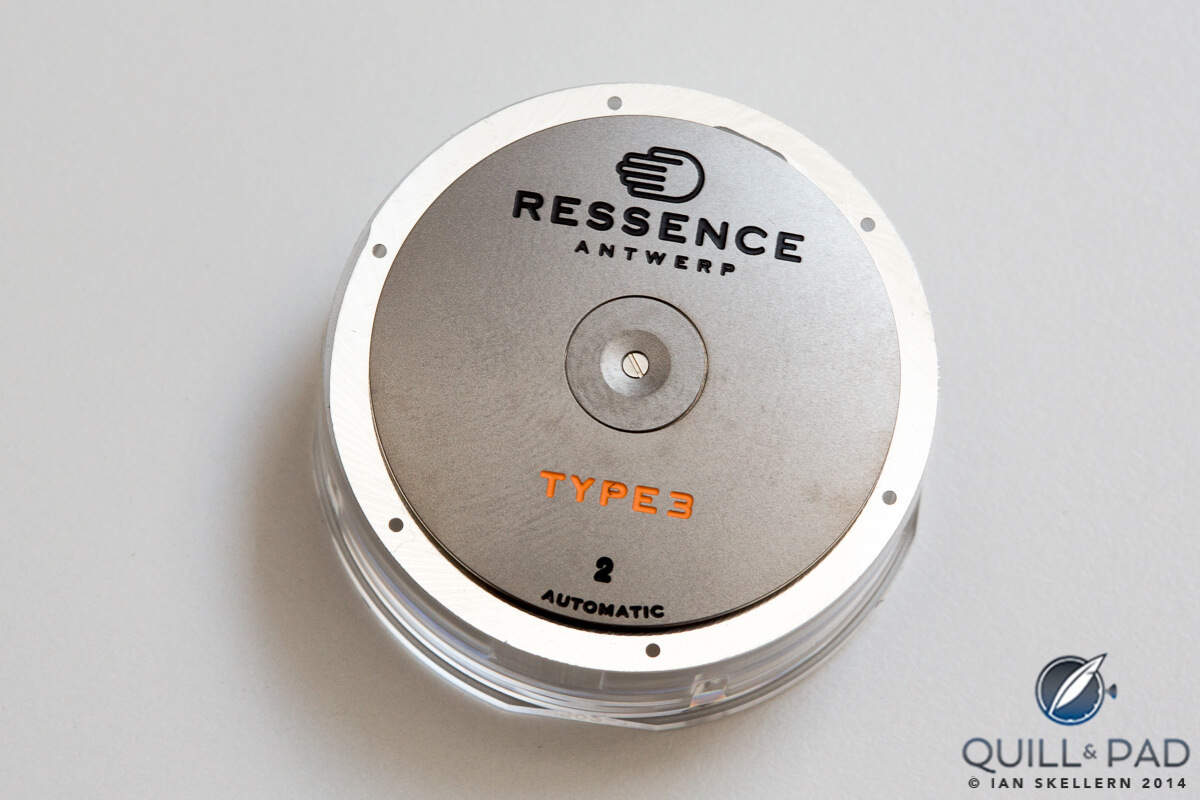



Super interesting article! Any chance of a video showing the assembly and how the fluid is kept inside?
Unfortunately I do not have a video, Claus, but basically the center titanium plate with the lugs seals the fluid in the top sapphire crystal dome that houses the indication module.
Very interesting article. I always liked this watch and knowing the physics behind it makes me like it even more.
Dear Ian,
brilliant write-up of a highly complex process. Thank you.
Dear Ian,
Really enjoyed reading your article, thanks. Do you have any idea what kind of fluid Ressence uses? On the outside it mentions that the watches contains petroleum, is that what they use or is it diluted with another fluid?
Hi, Hugo. My understanding is that the specific type of fluid Ressence uses is a secret, but that it is a type of light oil (think kerosene) like the kind used in compasses, etc.